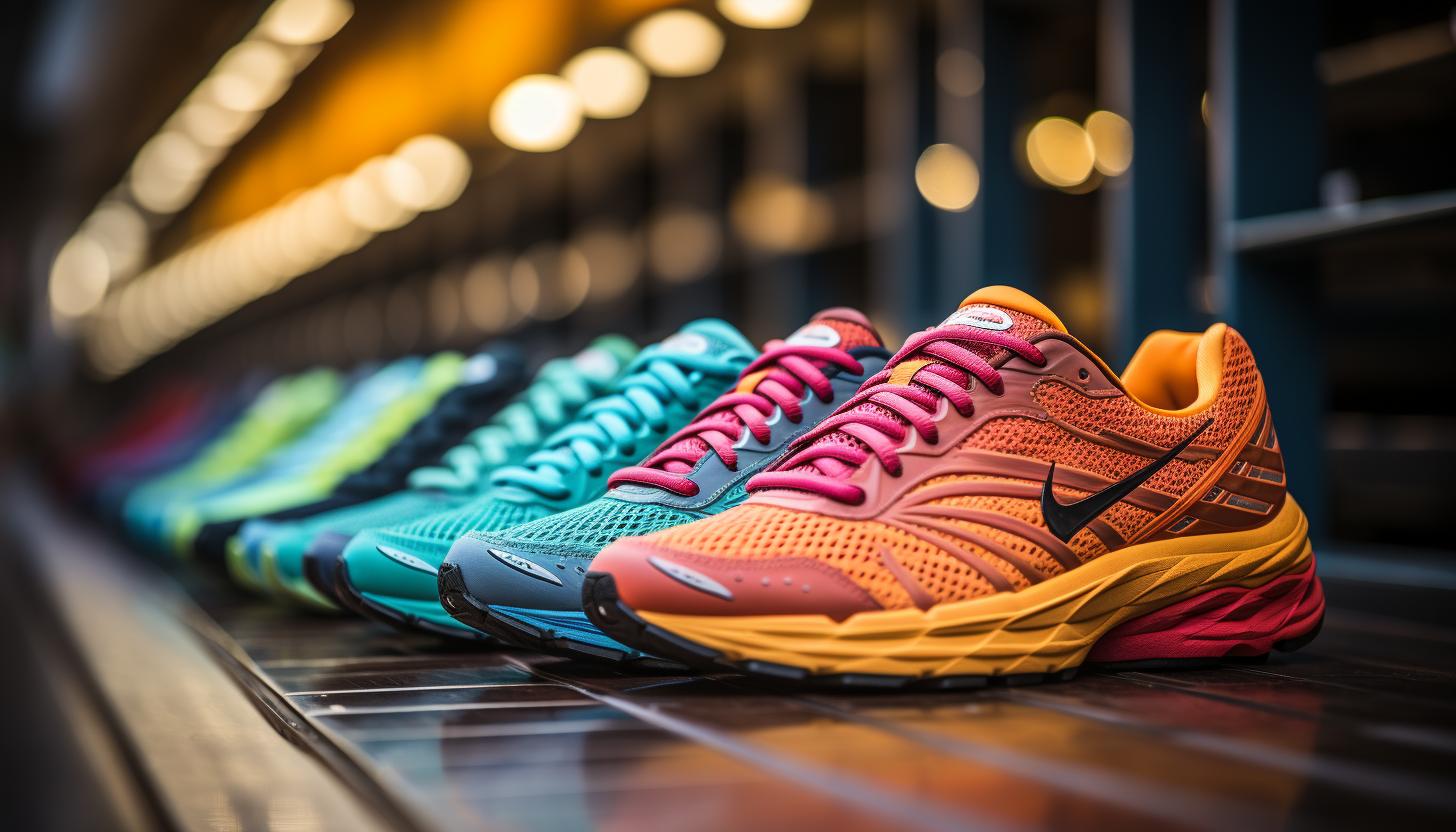Starting Your Running Journey: Tips for Beginners

You might be thinking, ‘Running is not for me. I’m just not cut out for it.’ But let me tell you, starting your running journey is easier than you think! With these tips designed specifically for beginners like yourself, you’ll be well on your way to becoming a confident and successful runner.
Set realistic goals, choose the right running shoes, warm up and cool down properly, build endurance gradually, and stay motivated and consistent.
Let’s lace up those sneakers and get started!
Setting Realistic Goals

When starting your running journey, it’s important to set realistic goals. Creating a training schedule is crucial in helping you stay on track and make progress. Start by determining how many days a week you can commit to running and the duration of each session. Gradually increase the intensity and distance as your body adapts and becomes stronger.
Measuring progress accurately is also essential for staying motivated and seeing improvements. One way to do this is by keeping a running log or using a fitness tracking app that records your distance, pace, and time. This will allow you to see how far you’ve come and provide a sense of accomplishment.
Remember, setting realistic goals means being honest with yourself about your current fitness level and abilities. Don’t compare yourself to others or push too hard too soon. Instead, focus on improving at your own pace and celebrate small victories along the way.
Setting realistic goals will help keep you motivated, prevent burnout, and reduce the risk of injury. Remember to be patient with yourself as progress takes time. With dedication, consistency, and determination, you’ll achieve your running goals one step at a time.
Choosing the Right Running Shoes

Make sure you’re wearing the right running shoes to support and protect your feet during your runs. Finding the perfect fit is crucial for a comfortable and injury-free experience.
When choosing the right brand, it’s important to consider factors such as cushioning, stability, and flexibility. Firstly, look for a shoe that provides adequate cushioning to absorb the impact of each stride. This will help reduce stress on your joints and minimize the risk of injuries like shin splints or stress fractures.
Additionally, consider whether you need extra stability in your shoes. If you have flat feet or tend to overpronate, look for models that offer added support on the inner side of the sole.
Furthermore, make sure the shoes provide enough flexibility in the forefoot area. This will allow for natural movement and proper toe-off during each step. Your toes should have enough room to splay comfortably without feeling cramped or restricted.
Remember that everyone’s feet are unique, so what works for someone else may not work for you. Visit a specialty running store where knowledgeable staff can analyze your gait and recommend suitable options based on your specific needs.
Now that you’ve found your perfect pair of running shoes, it’s time to move on to warming up and cooling down before and after each run respectively.
Warming Up and Cooling Down

After you’ve found your perfect pair of running shoes, it’s important to warm up and cool down before and after each run, respectively.
Warming up prepares your body for the upcoming physical activity by increasing blood flow to your muscles and raising your core temperature. This helps prevent injuries and improves performance. Here are some dynamic stretches you can incorporate into your warm-up routine:
– Leg swings: Stand next to a wall or hold onto something sturdy for balance. Swing one leg forward and backward, keeping it straight, for 10-15 swings on each leg.
– Arm circles: Extend your arms out to the sides and make small circles in a clockwise direction for 10 seconds. Repeat in a counterclockwise direction.
– High knees: While jogging in place, lift your knees as high as possible while pumping your arms.
– Walking lunges: Take a step forward with one foot, lowering yourself into a lunge position until the front thigh is parallel to the ground. Push off with the back foot and repeat with the other leg.
Now let’s talk about cooling down after your run. Cooling down allows your heart rate and breathing to gradually return to normal, preventing dizziness or fainting. It also helps flush out waste products from your muscles, reducing muscle soreness. Some benefits of cooling down include:
1) Reducing muscle stiffness
2) Promoting recovery
3) Enhancing flexibility
4) Mentally transitioning from exercise mode back to regular activities
Building Endurance Gradually

To build endurance gradually, it’s important to increase the duration and intensity of your runs over time. Building up your endurance is a key component of becoming a stronger runner and achieving your running goals. By gradually progressing in both distance and speed, you allow your body to adapt and grow stronger without overexerting yourself.
Start by adding a few minutes to each run every week. This gradual increase will help you avoid overexertion and reduce the risk of injury. As you begin to feel more comfortable with longer durations, you can start incorporating intervals or tempo runs into your routine. These workouts challenge your body to work at a higher intensity for short periods, helping to improve both speed and endurance.
Remember that building endurance takes time, so be patient with yourself. It’s normal to feel tired or fatigued during this process, but listen to your body and make sure not to push too hard too soon. Rest days are just as important as training days, so give yourself adequate time for recovery.
With consistent effort and proper rest, you’ll find that your endurance steadily improves over time. Embrace the process, stay motivated, and keep pushing forward towards those running goals!
Staying Motivated and Consistent

You can stay motivated and consistent by setting small, achievable goals for yourself along the way. Starting your running journey is exciting, but it’s important to maintain that enthusiasm as you progress. Here are some tips to help you stay motivated and consistent on your running journey:
– Find a Running Buddy: Having a partner to run with can make all the difference. Find someone who shares your passion for running or join a local running group. Not only will you have someone to hold you accountable, but you’ll also have someone to share the experience with.
– Track Progress: Keep track of your runs and milestones to see how far you’ve come. Use a running app or a simple journal to record your distance, time, and any other relevant details. Seeing your progress on paper can provide a great sense of accomplishment and motivate you to keep going.
– Set Milestones: Break down your ultimate goal into smaller milestones. This will give you something tangible to work towards and keep you focused along the way. Celebrate each milestone reached as it brings you closer to achieving the bigger picture.
– Reward Yourself: Treat yourself when you reach certain milestones or achieve personal records. Whether it’s buying new running gear or indulging in a massage, rewarding yourself provides positive reinforcement for all your hard work.
Conclusion
Congratulations on taking the first steps of your running journey! Just like a delicate flower blossoming, you are on the path to growth and transformation. Remember, Rome wasn’t built in a day, so be patient with yourself as you work towards your goals.
Choose the right shoes to support you along the way, warm up and cool down properly to prevent injuries, and gradually build your endurance. Stay motivated and consistent, for every step forward brings you closer to becoming the strong runner you were meant to be.
Keep going, embrace the challenge, and watch yourself bloom into a radiant runner!






